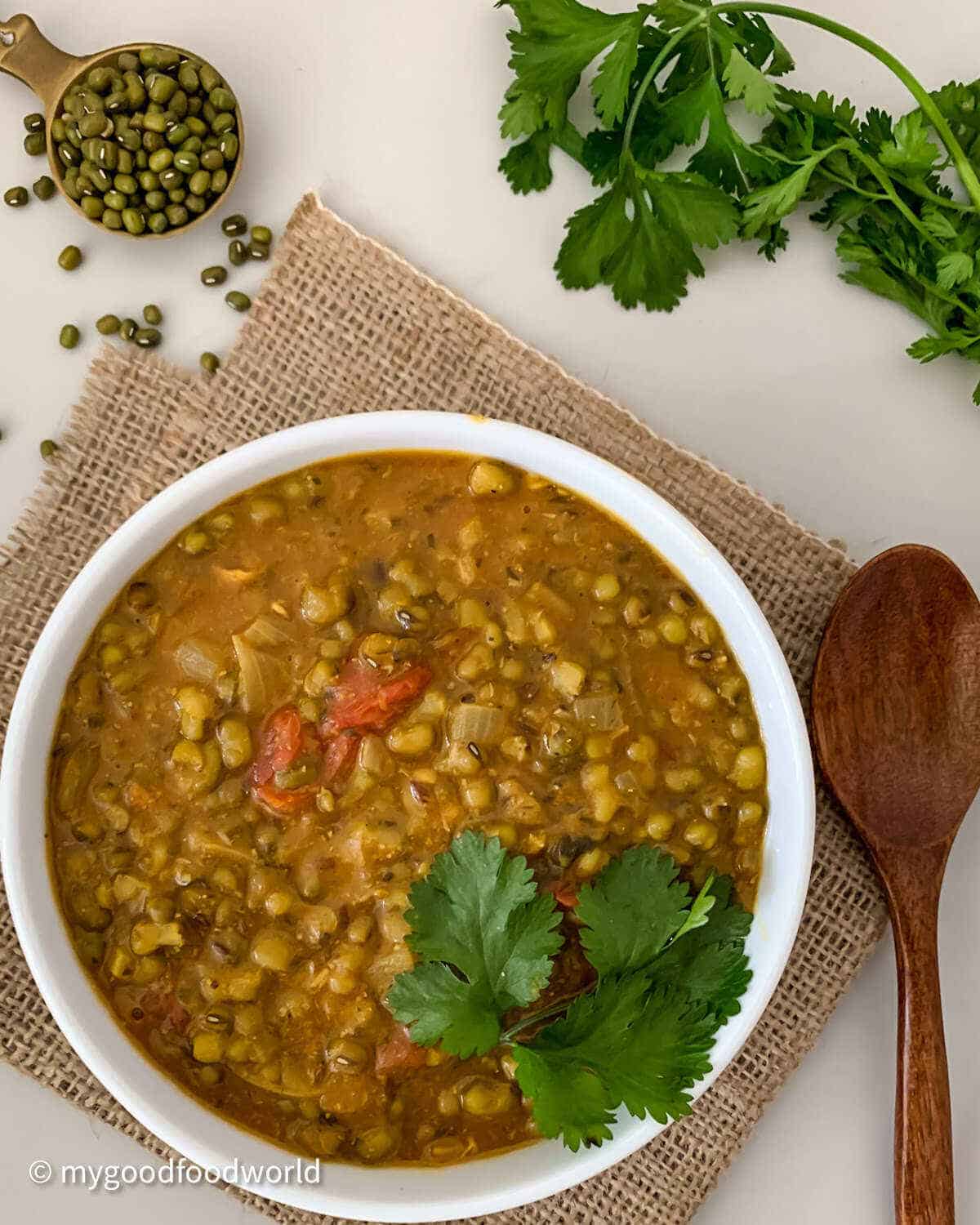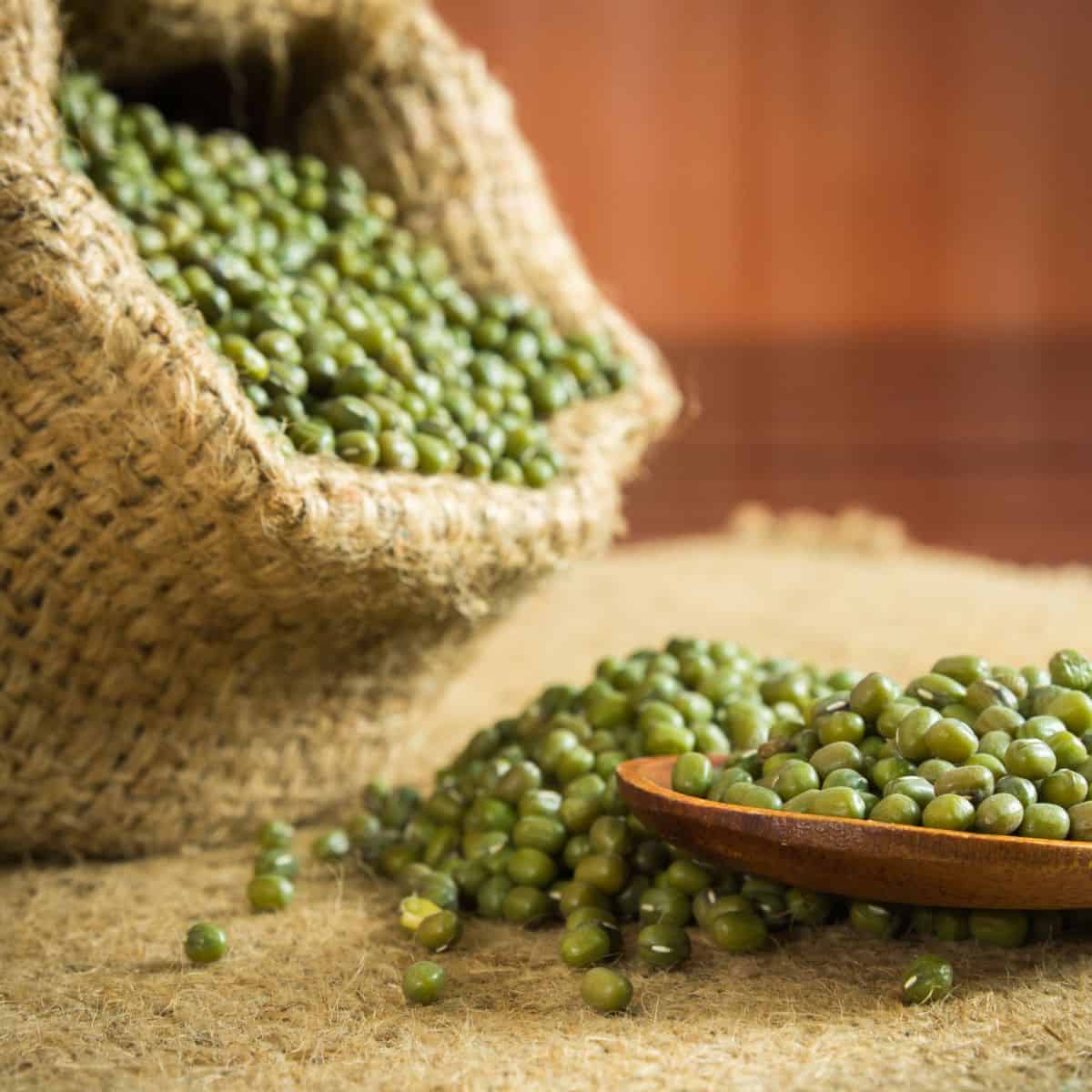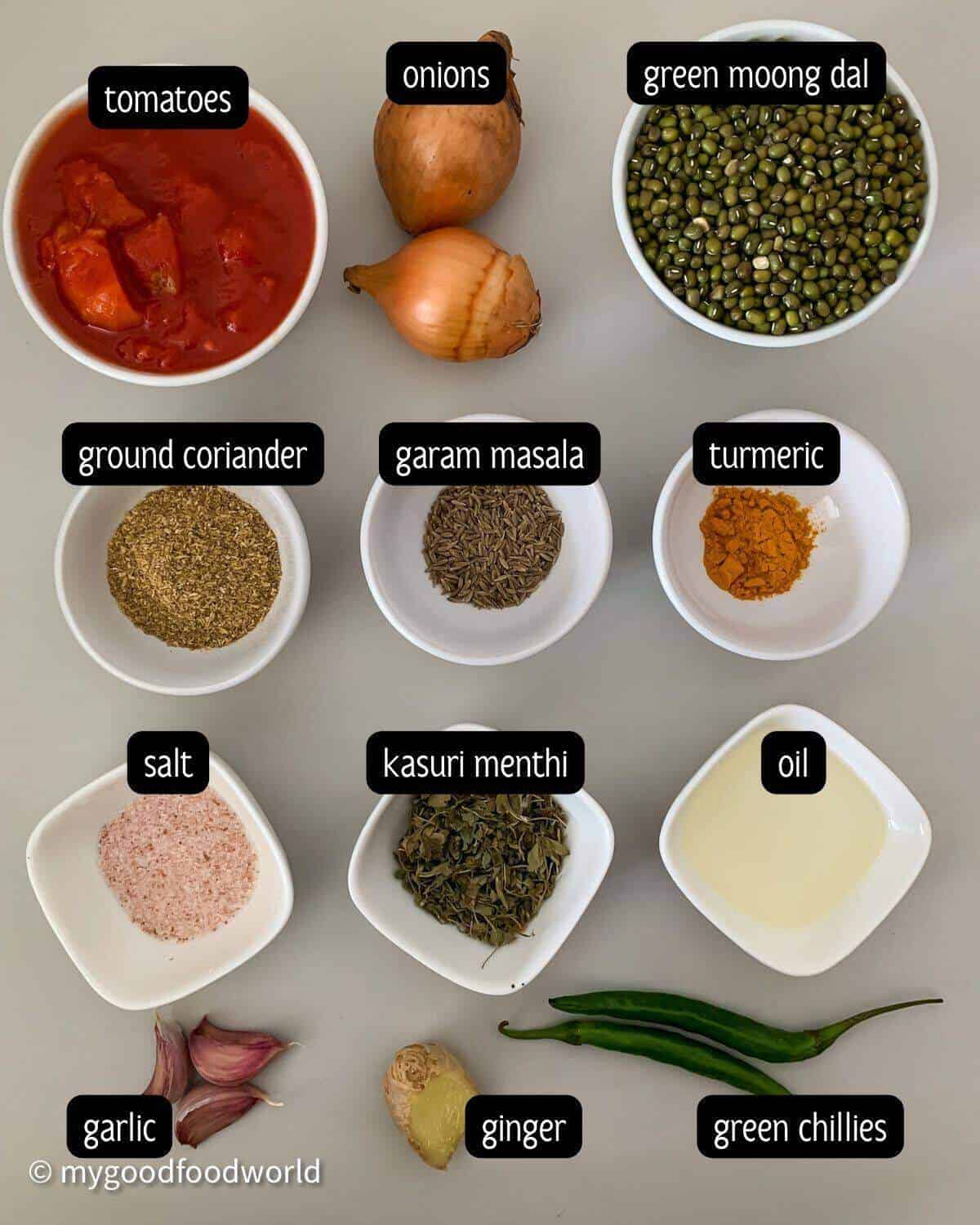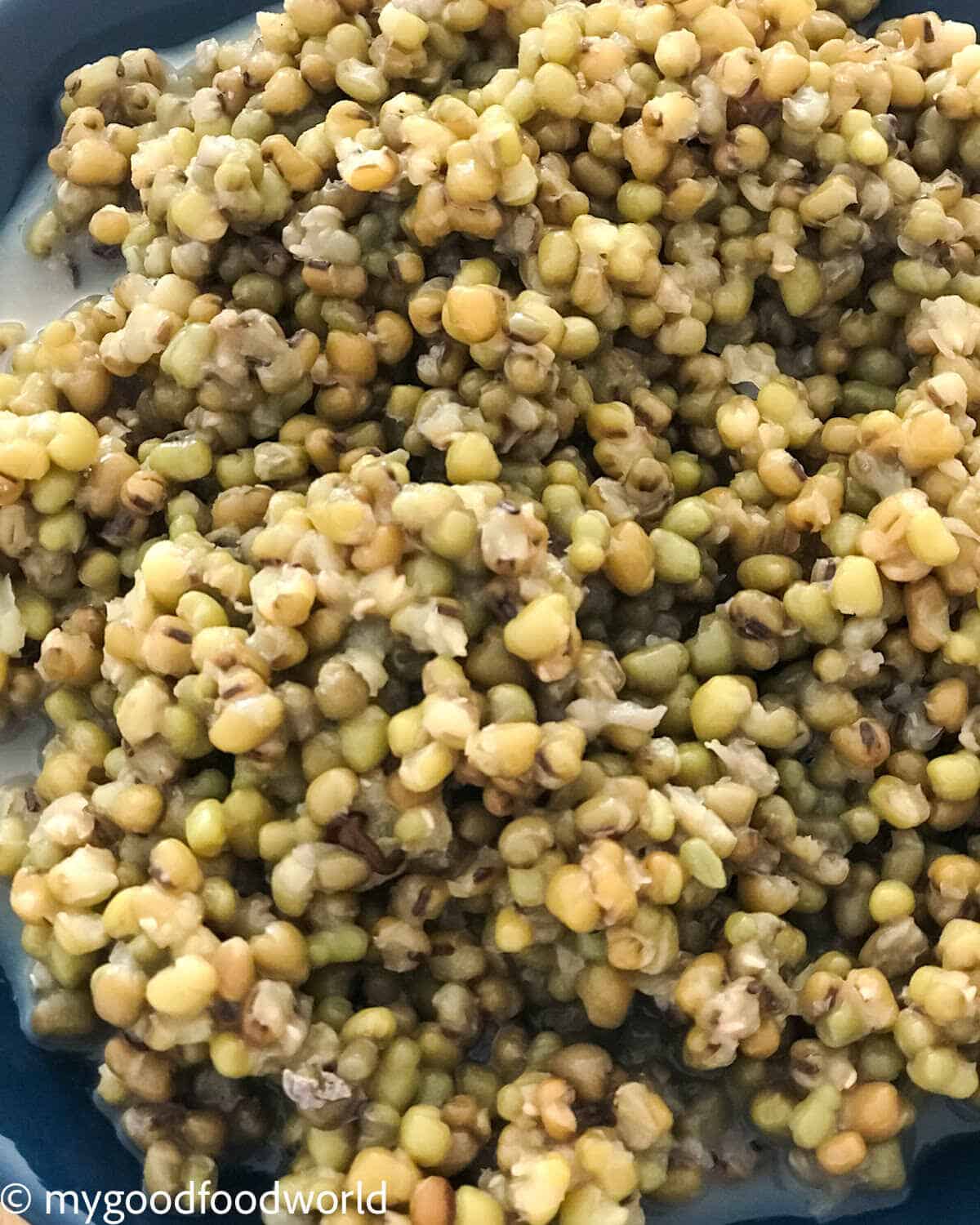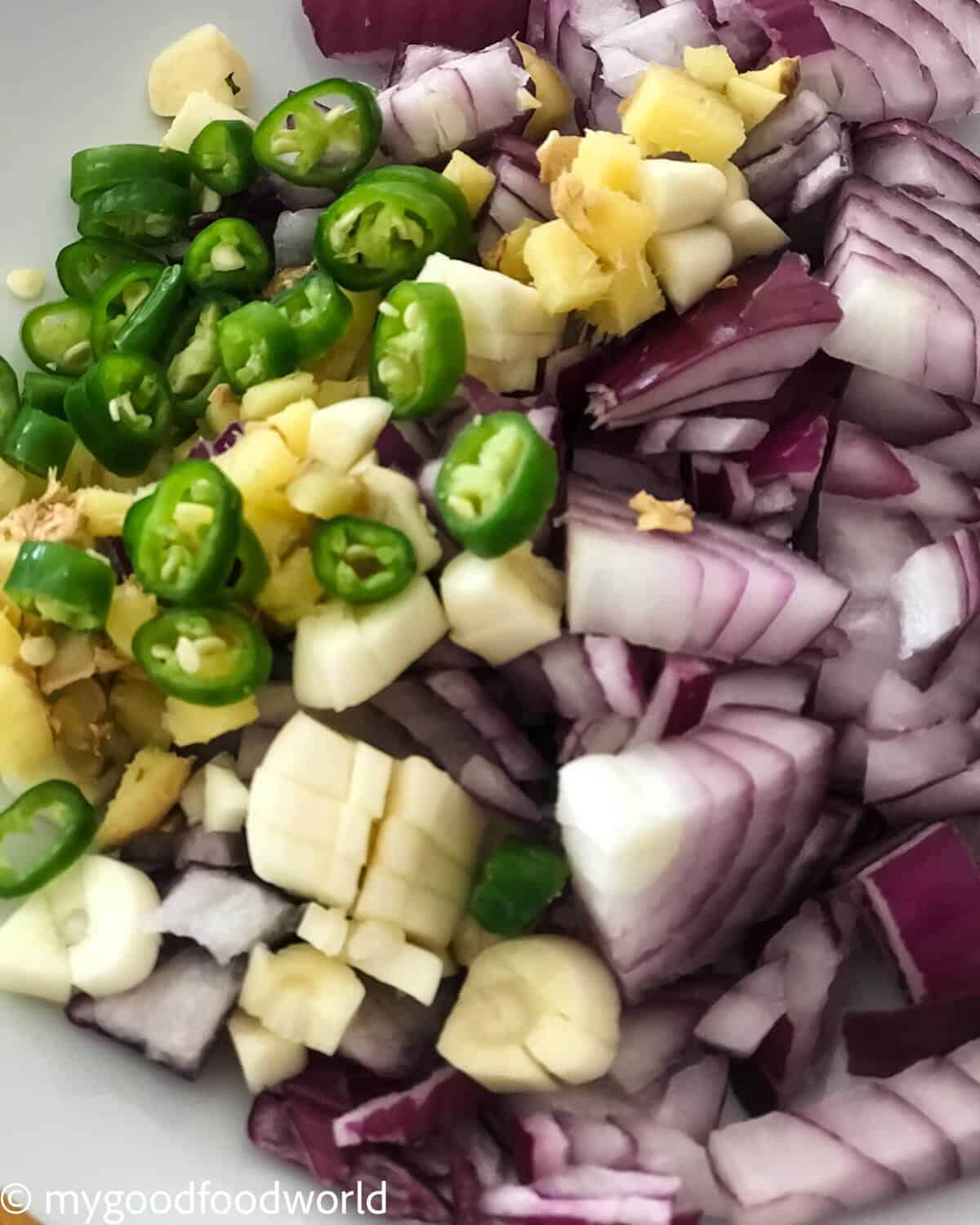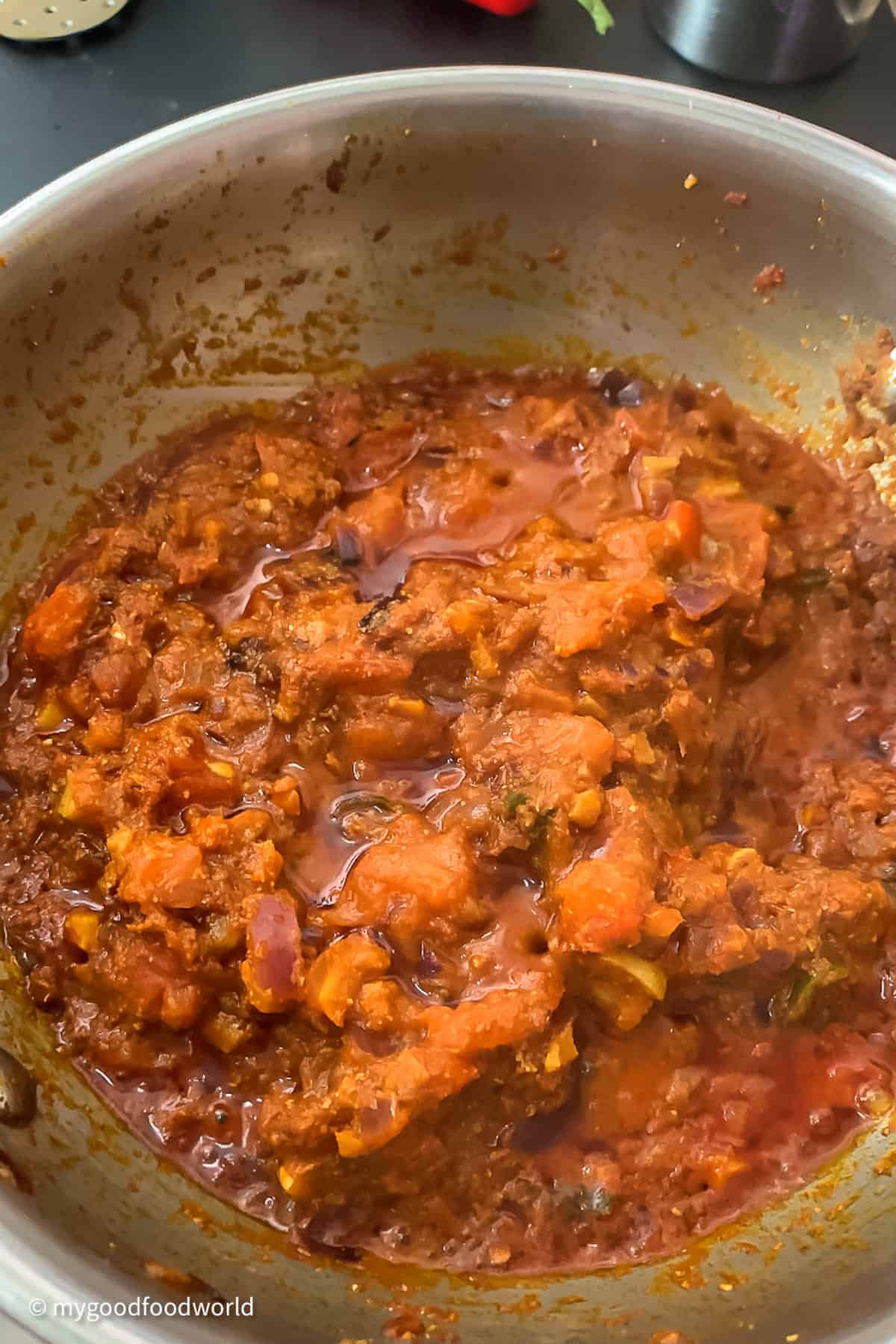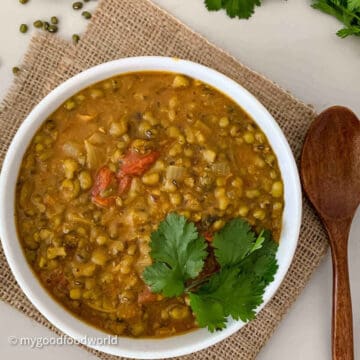A note about mung beans
These green legumes from the pea family are native to India and are now also widely cultivated in Asia. They are used extensively in savory and sweet dishes across Southeast Asia. Pesarattu, crepes made with soaked whole mung beans that are ground into a batter with ginger and green chilies, is our favorite Sunday breakfast. We make a crunchy vegetable and mung bean salad with sprouting mung beans as our go-to working lunch. On busy days, we savor this uplifting yellow lentil soup when a simple one-pot dish is all we have time for. Of all the dishes that I make with whole moong dal, this mung bean curry is my favorite. I turn to it when I need my protein fix. It fills me with a nourishing warmth that no other meal does when I serve it over a warm bed of no onion garlic pulao and drizzle some homemade ghee on top! What are your favorite whole beans? Do let me know in the comments below. I would love to hear from you. - Padma
Dairy (not, if you add ghee) Nuts Soy Grains
This recipe can be easily made without tomatoes by adding some lime juice (or lemon juice, if you prefer) instead. Add it at the end of the cooking process, after you have taken the pot from the heat. They have a mild, slightly sweet flavor and are known for their many health benefits. With 1 cup mung beans (cooked) having about 14 grams of protein, they are a rich source of protein and other nutrients such as iron and vitamin B1. Ayurveda, the ancient Indian science of healing, prizes green gram, another name for mung beans, as something that settles digestive issues and brings happiness. Whole mung beans are also known as green moong dal, sabut moong dal (sabut means “whole” in Hindi), and green gram dal. When split, they are known as yellow lentils or moong dal.
Do mung beans need to be soaked before cooking?
Yes, mung beans, like other legumes, need soaking before cooking. Soak them for 4-5 hours or overnight and then boil them well for a smooth and creamy texture. But don’t worry if you forgot to soak them. There is a solution. Read on to learn how to cook mung beans without soaking them.
How do you cook mung beans?
There are 3 ways of cooking mung bean for curry: Note: You can cook them in a pressure cooker (as I have) or in an instant pot. Any doubts or questions? Feel free to ask via the comments below. I will try my best to answer them for you. - Padma Check recipe card for quantities.
Tomatoes: I have used canned tomatoes because it is easy! If you are using fresh tomatoes, use the skin, seeds, and all. If your tomatoes are not sour enough, use some tomato paste as well to enhance the flavor. Kasuri methi: These are shade-dried tender fenugreek leaves. You will find this in most Indian grocery stores. Or use fresh cilantro instead. Green chili peppers: Use as mild or as hot as you can handle. It is absolutely ok to skip adding them. Aromatics: The pantry staples and holy trinity in the world of Indian cooking: onions, ginger garlic. For best flavor, use fresh ginger and garlic. Oil: I have used neutral oil. To amp up the flavor and fragrance, use ghee instead. Ground coriander: Also known as coriander powder. Garam masala: Use homemade or shop bought one. Curry powder will also work. Turmeric: Use turmeric powder and not fresh turmeric. Salt: I have used pink salt. Use whatever you regularly use in your cooking.
Have a question regarding the ingredients? Feel free to ask in the comments section below and I will try my best to answer it for you.
Equipment: I make this dish in a stove top pressure cooker to save time. I use the traditional jiggle top pressure cooker. You can follow the same process and make it in an electric cooker or and Instant Pot instead.
No pressure cooker or Instant Pot? You can make this recipe in a heavy bottomed pot, like a soup pot, a casserole or a Dutch oven. See the section above for cooking mung beans without pressure cooker.
Also see the video at the end of the recipe card.
Step 1: Soak the beans.
Wash the beans in 2-3 changes of water and soak them plenty of water (about 1 inch above the beans) for 4-5 hours or overnight.
Forgotten to soak the beans? No worries! See the section above on how to cook mung beans if you have not soaked them beforehand.
Step 2: Cook the beans.
After soaking the beans, drain the water and rinse them. Put them in a pressure cooker with 3 cups water and salt.
Lock the lid and heat it over medium-high heat. Cook for 10 minutes (3 “whistles” in a jiggle top cooker).
Let the pressure release naturally. Then open the lid and transfer the beans and the water to a bowl. Set it aside. The beans should be soft but not mushy.
Step 3: Prep for the sauce.
Chop finely: onions, garlic, ginger, green chillies and tomatoes (if using fresh ones) Boil: 1-2 cups of water
Step 4: Make the curry. Heat oil in a pressure cooker over medium-high heat. When it is hot, add the cumin seeds. Once they darken, add the chopped garlic, ginger and green chilies. Add the onions. Saute until the onions start turning golden brown. Add the tomatoes, salt, and the spice powders. Stir, reduce the heat to medium, and cook for 3-4 minutes or until the tomatoes are mushy (use the back of the ladle to mash the tomatoes faster). Add the cooked mung beans, their water and 2 cups more of hot water. Bring it to a gentle boil. Cover and cook (without pressure) for 4-5 minutes. Consistency: How you want to serve the dish will determine its consistency. If you want to have it with bread, adjust the water quantity so that you can scoop up the curry with a piece of bread. If you want to have it with rice or as a soup, add some more water. Step 5: Finish off. Crush kasuri methi between your palms (this will help release their aroma) and add it to the cooking dal. Cover and let it rest for a minutes or so for the flavors to blend. Turn off the heat and add ghee and lime juice, if using. Serve as a main with a side dish of your choice. See the section below for suggestions.
Cook the mung beans until they are soft, but not mushy. This gives the curry a lovely texture. The beauty of this recipe lies in its simplicity. Mung beans have a sweet tone to them. Just a few simple spices are enough to bring out their best flavor. The subtle flavors of finely chopped onions, garlic, and ginger work much better in this recipe than grinding them to a paste, as most curries require you to do. Although I say that adding kasuri methi is optional, I highly recommend that you do. It is such a game changer! Adding a spoonful of ghee (if you can) will add a lovely depth of flavor to the dish.
Substitutions and Variations:
No Kasuri methi? Use coriander leaves (cilantro) instead. Want it creamier? Add coconut milk or coconut cream after the tomatoes have cooked. Out of mung beans? Make it with split moong beans instead. Other beans that will work well instead of mung beans are black-eyed beans and butter beans. Do keep in mind that the cooking time of these will be different from that of green mung beans.
If you have made this mung bean curry, please take a moment to leave a comment and a rating below. This will make me super happy and motivate me to create more good content for you! You can also engage with me on Twitter, Facebook, and Instagram xx Padma
On a bed of mashed sweet potato and with this chia seeds salad for a filling grain-free, vegan meal 💚. With this jeera rice and carrot radish pickle for the most satisfying gluten-free lunch 😋. With some gluten free roti, plain rice, onion salad, and cucumber raita for a food-coma-inducing holiday lunch 😂.
Storage: This dish tastes even better the next day, so make a big batch and save for later. Let it cool to room temperature and the store it in an airtight container in the fridge for up to 3 days. Reheating: Moong lentils tend to thicken as they cool down. To reheat, put the curry on the stove in a thick bottomed pan and add a little warm water. Bring it to a gentle boil on medium heat and stir occasionally. Note: Reheat only what you need. Do not reheat the whole batch. Making ahead: This recipe requires a total time of 5 hours to make it from scratch, which includes a minimum of 4 hours of soaking the beans, 20 minutes to cook them, and another 20 minutes to bring it all together. You can soak and cook the beans ahead of time and store them in the fridge for up to 3 days. When I make one batch of this dish, I cook an extra batch of beans that I save and use later.
📖 Recipe
Disclosure: The nutritional information is calculated using an online calculator and is based on available ingredients and preparation. It should not be considered a substitute for a professional nutritionists’ advice. Changing the quantities and cooking technique will alter the nutritional calculations.
